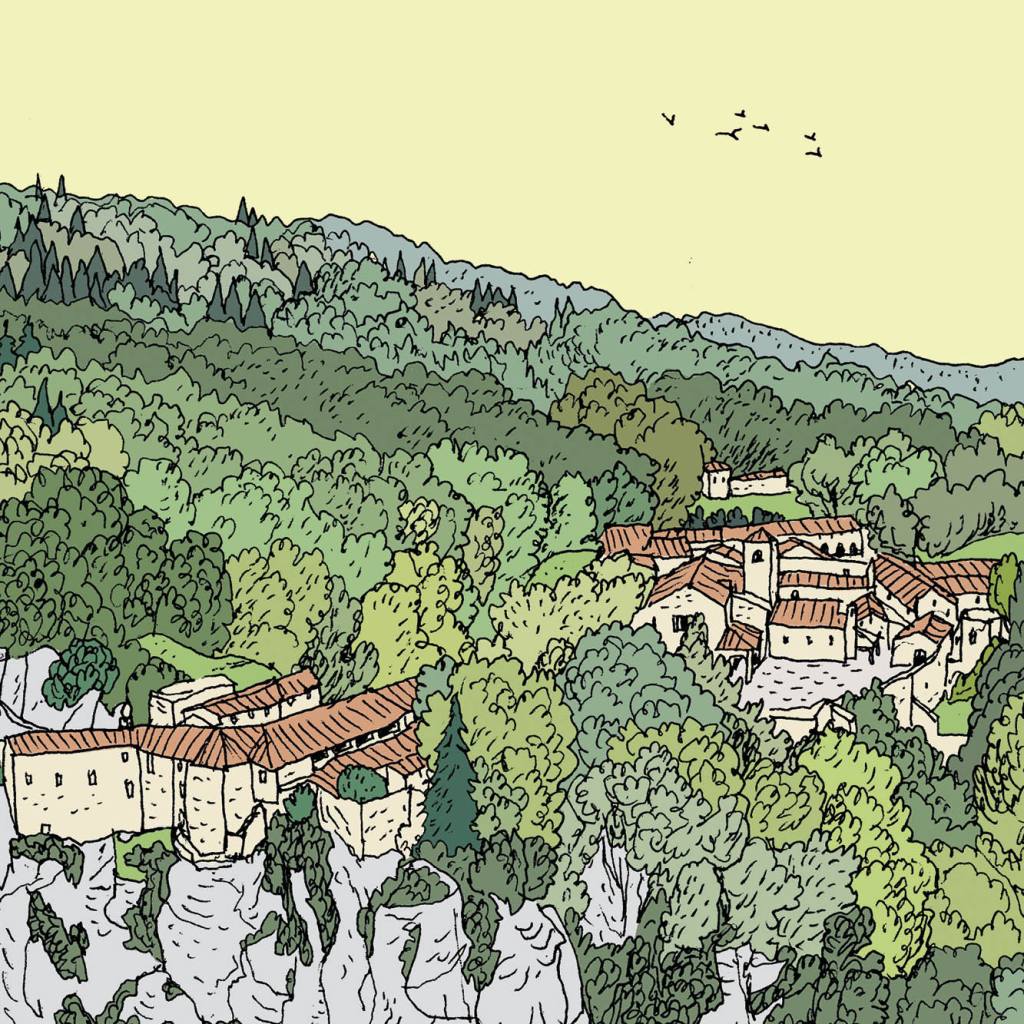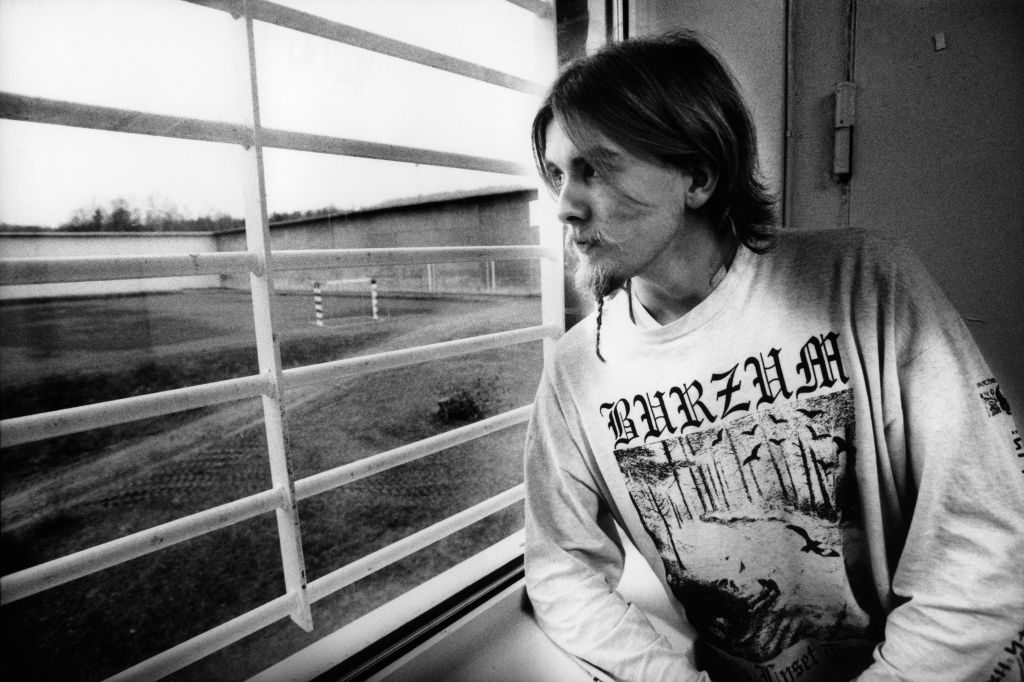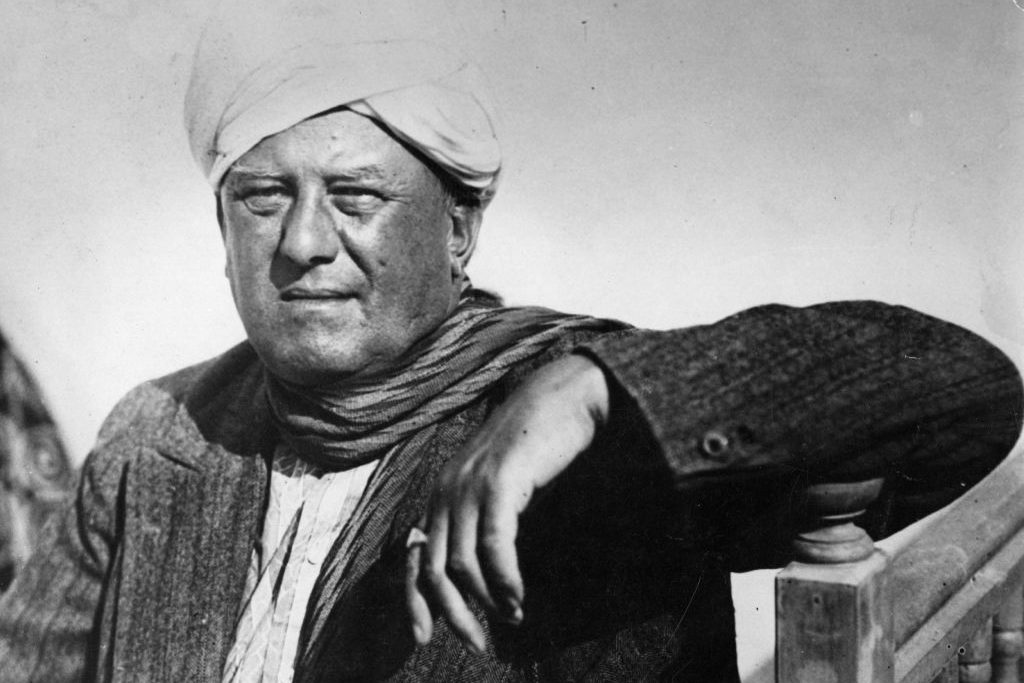Beneath a stunning Della Robbia Crucifixion a lone candle burns on the floor of the Holy Stigmata Chapel in the sanctuary of La Verna. The immense tranquility belies the astonishing events that occurred in 1224 on this rocky outcrop in central Italy’s Umbrian hills.
The chapel marks the spot where, two years before his death, Saint Francis, retreated to fast and pray with two of his brother friars.
After some weeks, Francis saw a six-winged Seraphim, apparently crucified, who appeared and imposed the five wounds of Christ’s Passion on his body — in paintings the angel appears to be “lasering” St. Francis, who is often depicted as a sort of Franciscan version of Willem Dafoe getting it at the end of the film Platoon — including the nails protruding.
Heady stuff. Seraphim don’t appear every day. Go to the chapel at La Verna, in Arezzo about fifty miles from Florence, early in the morning or later in the day and you can have it to yourself. Then you get a better sense of its being a so-called thin place, one of those sites “where the membrane between the mundane and metaphysical [is] thin,” as Oliver Smith describes them in On This Holy Island: A Modern Pilgrimage Across Britain.
During the day, people crowd the chapel on their knees praying, or sit cross-legged by the lone candle as they meditate on Francis and how he managed to open his mind and heart to a degree most of us will never manage.
Like any self-respecting holy sanctuary, La Verna is high up in the hills, at 1,128 meters above sea level, away from tawdry worldly affairs. Having ascended a steep, cobbled track, the visitor passes through an ancient entrance into the piazzale quadrante, the main square next to the basilica that dates to 1348.
Inside the church, the Chapel of the Relics contains a small piece of linen cloth which the saint is said to have kept next to the piercing in his side, to protect it from his rough woollen tunic. The tattered remnant of this diminutive garment is also on display (what Saint Francis clearly lacked in stature, he made up for in superhuman willpower).
The basilica contains another Della Robbia that many consider the Florentine sculptor’s masterpiece. In his depiction of the Annunciation everything is in suspense: you can see it in the hopeful terracotta face and eyes of the angel after delivering his cosmic message that Mary will bear the son of God, and in Mary’s expression, that captures that “eternal moment between her confusion and her joyful abandonment to the will of God,” as my La Verna guidebook put it.
In the middle of the quadrante a tall but simple wooden cross is set on a rock where it stands out against the sky, drawing your gaze across the immense panorama of the Casentino valley. On the horizon lie the Pratomagno peaks, just before those of the Apennine range. As a result of the altitude and fine views, the soaring swifts can end up flying their amazing acrobatics disconcertingly close to your head.
La Verna is a true mountain redoubt, overlooking a sheer cliff. A narrow walkway leaves the small chapel of St. Anthony of Padua and hugs the cliff edge before reentering the sanctuary. Only a set of low railings stands between you and the precipice. When the wind picked up, I found myself instinctively backing against the rock face. The story goes that the devil attempted to throw Francis over the edge, but the faithful friar clung to the rockface which protected him by melting away as though it were soft wax.
Down below you can see meadows and emerald-green forest thick with beeches, firs, maples and ash-trees. Littered throughout are piles of giant rocks, with small caves formed by fissures and rocks leaning against each other. St. Francis is said to have sought these rock formations out during his great fasts, meditations and prayer sessions, comparing inhabiting their cramped spaces to “entering the wounds of Christ.”
Packs of wolves roamed the surrounding area in the Middle Ages. In the town of Gubbio, not far from La Verna, St. Francis confronted a fierce wolf that was eating the townsfolk. Having persuaded the wolf of the error of his ways, the saint presented a contract to desist, famously established by the repentant wolf putting its large paw in St. Francis’s hand.
Among the small group of pilgrims with whom I walked to La Verna was a ten-year-old boy who took great delight in spotting paw prints made by today’s wolves — there are still quite a few — and hoof marks made by wild boar in the same muddy tracks we followed. One afternoon when walking on my own, I encountered a potential distant relative of the wolf of Gubbio on a steep forested track. The wolf seemed more startled by me than I by it and bolted off after we pondered each other for a few seconds. I was relieved: it looked like it had very large paws.
There’s a fairytale quality that permeates this land, in addition to the far-fetched accounts of Francis, the endless birdsong and marauding wolves. Stone carvings and etchings of dragons, serpents and strange mystical animals adorn churches and buildings in the towns and villages around La Verna. Carved into the stone columns of the church of Santa Maria Assunta in the town of Stia were bare-breasted mermaids, strange Celtic-esque spirals, zigzags and floral shapes.
To visit La Verna and its surrounding region is to confront the spiritual echoes of those who, like us now, tried to make sense of it all. It is easy to pooh-pooh the claims of La Verna and the talk of six-winged angels and St. Francis’s being imprinted with the same wounds as a rebellious Galilean. But, as my guidebook put it, within La Verna’s mystery are “a thousand messages of beauty, of power, of silence, of searching, of peace.” Whatever your view of religion, we could surely do with more of that right now.
This article was originally published in The Spectator’s December 2024 World edition.























Leave a Reply